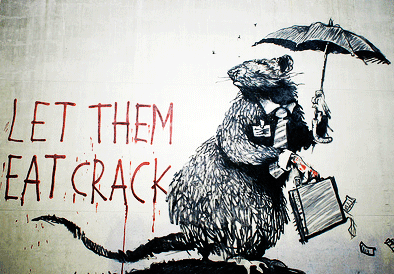
<a href="http://www.flickr.com/photos/denial_land/2930975001/" target="_blank">caruba</a> via Flickr
For a long time scientists thought that drug addiction was distinctly human behavior. Then researchers discovered that rats can form addictions, too. Aside from being just one more reminder of how frighteningly similar we are to our lab companions, this finding offered scientists a chance to study how addiction actually works. Why is it that only some drug users spiral into addictive behavior? Is the addict’s brain actually different? There was really only one way to find out: Give a bunch of rats some coke and see what happens.
In a study published in the June 25th edition of Science, a team of researchers attached laboratory rats to a device that allowed the rodents to self-administer doses of cocaine—a coke IV of sorts. After a month, the researchers began identifying which rats had become hooked on the drug by looking for the hallmark signs of addiction: difficulty stopping or limiting drug use; high motivation to continue use; and continued use despite negative consequences. Only 20 percent of the rats exhibited all three signs of addiction, while 40 percent exhibited none. The researchers were left to figure out what it was that made addiction-prone rats—and presumably people—different from the rest. Here’s what they found.
At first, drug use alters the physiology of every user’s brain as they go through a sort of reward-response learning: If you take the drug, you will feel better—certainly a dangerous mindset to be in when you’re wired to an unlimited supply of cocaine. Luckily, in most cases a brain eventually re-learns how to control its intake of the drug. Addict brains, not so much. Unlike their non-addict furry friends, the brains of addict rats lack sufficient “plasticity” —a property of the brain that allows it to adapt to changes over time—to get a handle on their habit. These rats are stuck in a reward-response frame of mind, and with it a downward spiral of addiction.
Part of treating addiction, then, may be figuring out how to help an addict’s brain out of its inflexible state. Perhaps someday there will be a pill an addict can take to increase brain plasticity and improve their ability to adapt to new situations. A guy could really get hooked on something like that.














